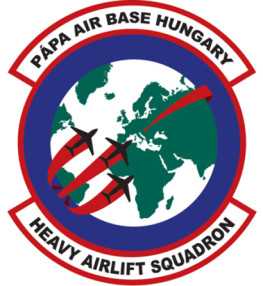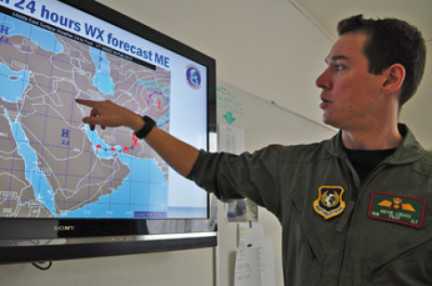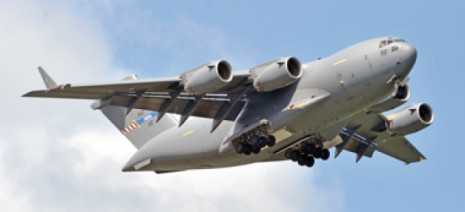The One Who Finished the School of Survival
Szöveg: Gábor Kálmánfi | 2012. április 16. 13:57Some years ago there was a promotional campaign going on at the big Hungarian universities to advertise the NATO Flying Training in Canada (NFTC) program. In 2002, a young man named Viktor Lukács studied at the Budapest University of Technology (BME). Today he holds the rank of first lieutenant and serves with the Pápa-based Heavy Airlift Wing as its only Hungarian pilot.

– Why didn’t you become a fighter pilot?
– Every pilot candidate is streamed for a specific training course, according to his ability. The experience of traveling and flying means so much to me. We can fly over entire continents by a global-range aircraft in a short time. We fly 24 hours, while our fighter pilot colleagues have missions of a completely different character. I had flown with the airlift squadron of Kecskemét for three years before I transferred – upon the commander’s order – to Pápa, the home station of the Heavy Airlift Wing (HAW).
– Orders are orders…but does the opportunity of serving with a unit like this require some extra?
– As for me, in addition to completing the three-and-a-half-month C-17 Initial Qualification in the USA, I had to undergo a three-week SERE exercise, which was quite hard. I spent the first and the third weeks without food or drink in snow and frost while roaming the woodlands of the Netherlands and Germany. The training objective was to let the crews master the techniques which help them to survive, escape and extract in the area of operations.

– Yes, but it took three months until I was able to feel my toes again after the exercise. During the final week I spent five days in the wilderness at temperatures of minus 5-10 degrees Celsius. I was alone, having only the standard survival kit on hand. We are forbidden to light fires in the areas of operations; I had nothing else to eat but a 200-gramm cookie-like “something", and I had to get water from snow. To simulate the enemy, there was a 30-strong team of pursuers on my trail, being equipped with dogs and NVGs. They were trying to catch me, while I had to make sure that I won’t freeze to death and that they cannot discover my footsteps in the snow. During the training we learnt the code of conduct to follow in case of being captured.
– Let us now return to Pápa. Was it not difficult for you to integrate?
– Not at all. I knew that soldiers of 12 nations work together here, so I had to be open-minded anyway.
– Is the organizational structure here the same as in Kecskemét?
– No. Under Norwegian Lt.-Col. Christian Langfeldt’s command, the Heavy Airlift Squadron (HAS) is tasked with flying the missions. At the same time, it is the responsibility of the Command and Control (C2) section to organize and carry out other flight-related tasks like planning the routes, obtaining the diplomatic permits and finalizing the passenger and cargo manifests. The Logistics Support Squadron (LSS) has the mission of providing the logistic infrastructure for all these activities. The airlift squadron of Kecskemét performs by itself the tasks that are similar to those of the C2 section.
– Let us now look behind the scene: what happens usually before the take-off?

– Is this an endless story?
– Sometimes it does seem so…We can fly 24 hours with an augmented crew (three pilots and two loadmasters), during which we have just one or two hours to sleep. And that is no more than an opportunity indeed, because of the high noise level and because the aircraft will not always fly smoothly due potential turbulences. However, in return we can have exceptional experiences, as flying over those huge distances at an altitude of ten kilometers we can look and marvel at the Sahara, the whole of Europe, the Atlantic Ocean, the Himalayas – almost the entire world. For example, we have already been to Dubai, the Caribbean region and Central Africa. Each location has a special atmosphere to it. As a tourist, you can only rarely get to places like these.
– Needless to say, a globetrotting soldier has a characteristic route and most of his destinations are special too. The mission of the airmen serving with the HAW is not without dangers…

– Do you have time for other types of training?
– We have to find time to develop the skills of the team and its members. We devote ten per cent of the HAW’s pre-agreed flying hours to maintain flight proficiency. We use this time to practice different tactical methods of take-off and landing, flying by night with NVGs, low level flight, air refueling and the combinations of all these. As for myself, according to this year’s schedule I am going to take a course in airdrop of cargo and personnel. The C-17 is suitable for airdropping paratroops and light/heavy cargo, including tanks, by parachute; we learn the relevant methods during the training. In our unit, the way forward to the future is the pilot in command training – whose eligibility criteria are the number of flight hours and aptitude. Of course, we all know that pilot in command is the one who makes the final decision in all situations during the flight. But we are also aware that we, crewmembers must work together as a cohesive team, wherever our duty calls us.
Photos: Veronika Dévényi, László Tóth and the author